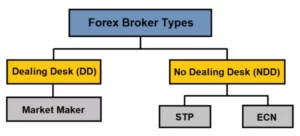In the modern world, in order to maximize the sales in your online business, you need to improve your client interaction model. The basic manual methods include a good website layout, email lists, and other solutions that don’t require an algorithmic approach or all that much software.
Analytical CRM is a different story. It’s a collection of software solutions that analyze the behavior and needs of your clients, which in turn allows you to build a complex experience tailored specifically for a client (or rather, a group of similar clients). Given that these experiences fit their needs, clients continue buying.
What is analytical CRM?
CRM stands for Customer Relationship Management. That’s a group of systems, whose sole purpose is to make sure your customers have a comfortable, optimized experience within your online business. There are many solutions inside the CRM category, and you can largely divide them into collaborative, operational, and analytical.
Analytical CRM is a critical branch. Thanks to it, you can collect, manage, and use information about any of your clients. The reason why you need this is that customers respond very well to shopping experiences that fit their preferences, needs, opinions, and prior activity.
Clients themselves provide this information to you, albeit unbeknownst to them. This includes:
- Payment details – how much they pay, what they pay with, their paying capacity & more
- Purchase details – what brands, products, offers they prefer & more
- Loyalty details – their visits frequency, satisfaction rate, service opinion & more
Everything they do is compiled into various data groups and then analyzed to understand what could make the experience of the particular customer more personalized.



Turnkey Brokerage Solution For Your Business
Get the most profitable fully licensed fx/crypto brokerage software or ready-to-operate business in 48 hours. Best-in-class web & mobile trading platforms, sales-driven CRM, full integration with MT4/5, and 150+ payment providers.
Data collection
Data first needs to be collected in order for it to be thoroughly analyzed. It’s collected throughout the client’s time spent on the website, and there are several principles this progress sticks to.
- Account-based interactionWhen a user creates an account on the website, they instantly start to get tracked. This account is being assessed and categorized based on the client’s activity and decisions. Moreover, their information (email, phone number, social media) needs to be collected to interact with the customer as much as possible within the limits agreed to by the client.
- Personal categorizationWhatever you do is used by the system to create your personal portrait. It consists of your personal information, age, gender, background, and many other things that let analytical solutions find correlations between you and whatever it is you buy. After that, these conclusions benefit other users with similar parameters.
- GroupingMuch of your activity on the website is collected through data mining solutions. Data mining basically means that all data is gathered by an algorithm, analyzed, and grouped into various groups. This also includes your personal data, which is in itself collected and assigned to various categories, based on ages, background, and other demographics.
Analysis
Based on who you are and what you do on the website, the solutions can build connections and correlations between, say, your age and the sports gear you buy.
If a lot of middle-age people buy baseball gear, this case is assessed by the algorithm. If it finds that there is a correlation across the system, it’ll be used to alter the client experience for these people.
Obviously, you can’t tell your business to analyze any of it on its own – it needs proper instruments for this task. For it, a lot of solutions use the OLAP (Online Analytical Processing), which can process data you accumulated in your database and find preferences.
How is it helpful?
The analytical CRM solutions have many ultimate uses. A lot of them have something to do with maximizing sales or other parameters.
- More sale opportunitiesThe chief purpose of these solutions is to create more sale opportunities cleverly. If you just mindlessly shove the offers into their faces, they won’t be so inclined to buy them. But if you know what they like and offer it at good timing, the sales will skyrocket. This of course requires you to know what they like, but that’s the whole point.The most common example is, of course, the product recommendations. You can sort products into categories that correlate with the specific user categories. That’s exactly why you’ll often see stuff similar to what you already bought or something that ‘users like you buy’.Again, timing is essential. You can place upsells (the additional offers extended after the person has already finished the shopping) or email people afterward to invite them back (while maybe offering them a discount).
- Understanding customer logicNot all of your visitors immediately become customers. A lot of them leave simply because you didn’t meet their expectations at some point. Even when they leave, the tools see what page they were last on and how long their visit was. This helps to understand what parts of your business environment repel potential customers.Likewise, it also helps understand what on your website converts visitors into customers. This sort of information allows you to experiment with your layout and thus boost sales and customer satisfaction.
Advantages and Disadvantages
Obviously, you’ll have to find a few of these solutions before using them. It’s a bit of a bother, but it’s absolutely worth it for a few reasons:
- Superior lead conversion. The CRM is very efficient in converting leads (people who stumbled onto your business) into actual buyers. It happens because they are immediately shown products they may be interested in based on their category.
- Automation. Not only does this software increase your sales, but it also does it with full automation. It’s true that you may want to spend some time tinkering with it, but much of the work will be done with utmost independence.
- Higher customer satisfaction. An often-overlooked fact is that analytical CRM actually does part of the client’s job for them. They don’t have to browse as much because they already have a few shopping options immediately, which is a good place to start even if they don’t want any of that.
- More user information. Although the information isn’t as useful without the tools to customize the user experiences, you can still see just what sort of customer base you have, which in turn allows you to be more conscious about your marketing.
There are also several disadvantages, although they are overshadowed by the sheer boost the upsides give you. This includes:
- Small business limitations. These solutions are wonderful for businesses with an established or growing user base. However, if you own a small shop, you probably won’t even need to bother with installing all of them. A few leading solutions will do.
- Installation. There are lots of analytical applications out there. Not all of them are good, not all of them are free, and not all of them are compatible with the platform your website is built on. So, looking for the one you need takes time.
Summary
In the end, these solutions are very effective if used correctly and knowingly. There are few things that aren’t improved by the automated solutions that collect and manage user data to see what they like. There’s actually no real alternative if you want to analyze your customers for this purpose.






